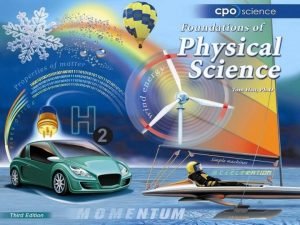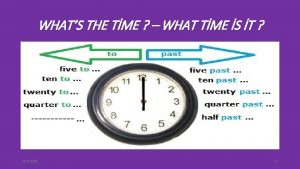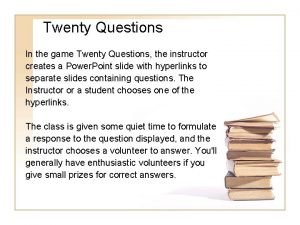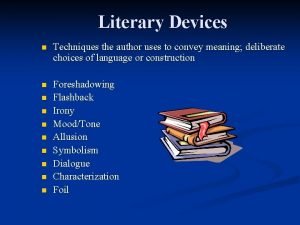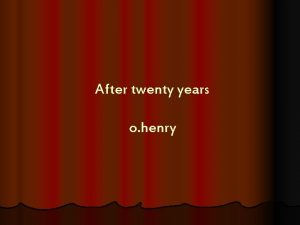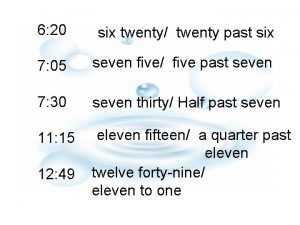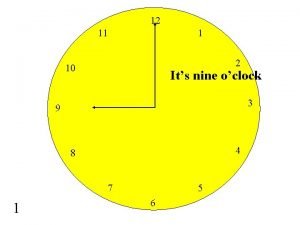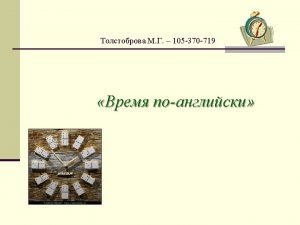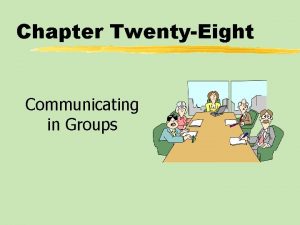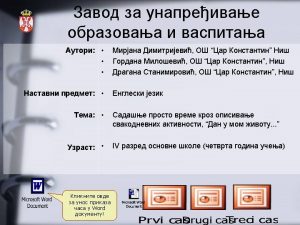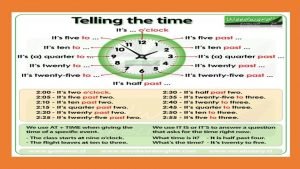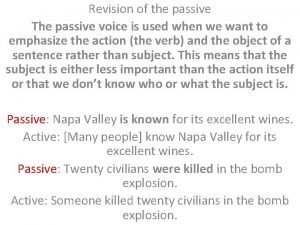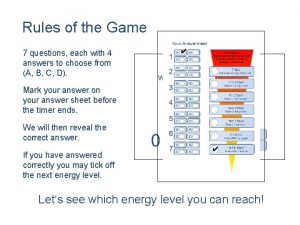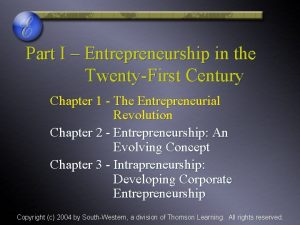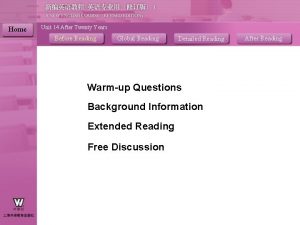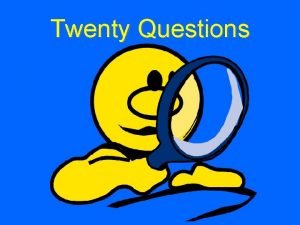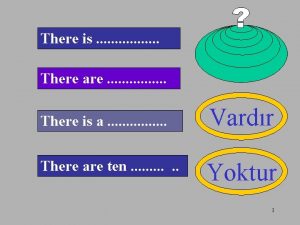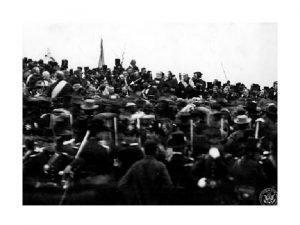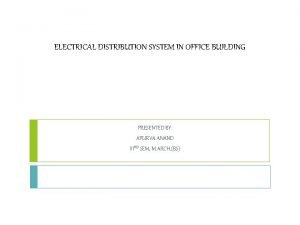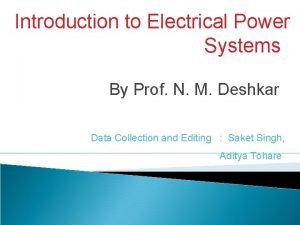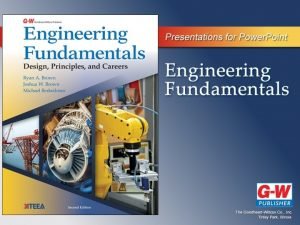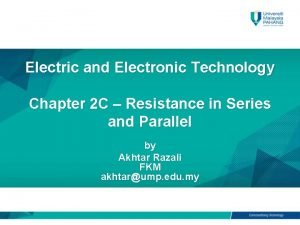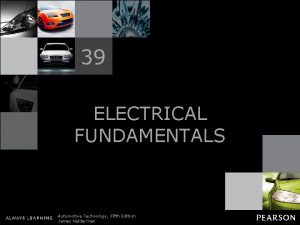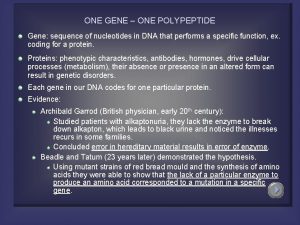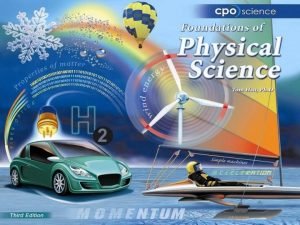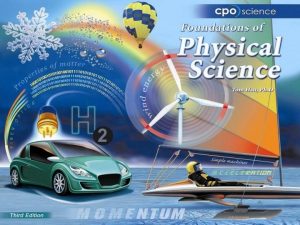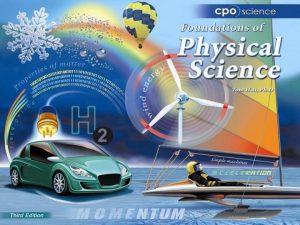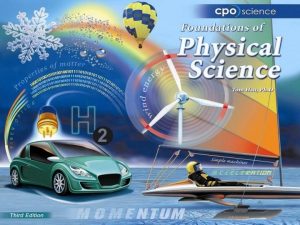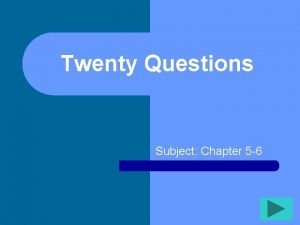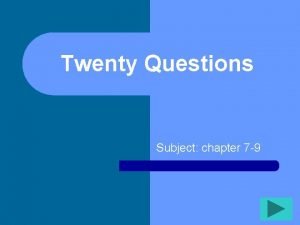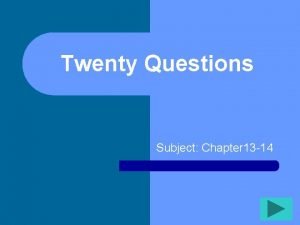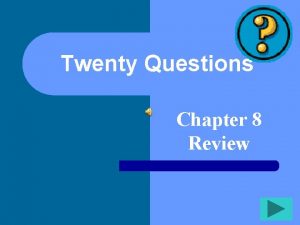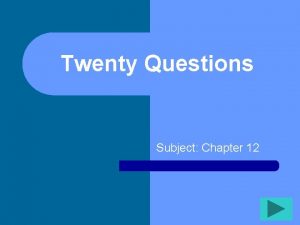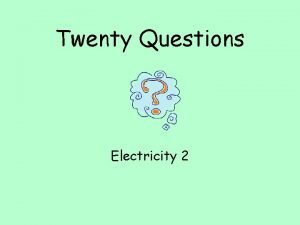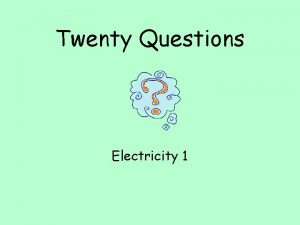ELECTRICAL SYSTEMS Chapter Twenty One Electrical Systems 21






























































- Slides: 62

ELECTRICAL SYSTEMS

Chapter Twenty One: Electrical Systems Ø 21. 1 Series Circuits Ø 21. 2 Parallel Circuits Ø 21. 3 Electrical Power

Chapter 21. 1 Learning Goals ØBuild analyze series circuits. ØApply Ohm’s law to calculate the current in a series circuit. ØExplain how energy conservation applies to electric circuits.

Investigation 21 A Electric Circuits ØKey Question: What are the different types of circuits?

21. 1 Electrical Systems ØIn a series circuit, current can only take one path, so the current is the same at all points in the circuit.

21. 1 Electrical Systems ØInexpensive strings of holiday lights are wired with the bulbs in series. ØIf you remove one of the bulbs from its socket, the whole string of mini bulbs will go out.


21. 1 Current and resistance in series circuits ØIf you know the resistance of each device, you can find the total resistance of the circuit by adding up the resistance of each device.


21. 1 Current and resistance in series circuits ØThink of adding resistances like adding pinches to a hose. Ø Each pinch adds some resistance.

21. 1 Current and resistance in series circuits ØEverything has some resistance, even wires.

Solving Problems ØA series circuit contains a 12 -V battery and three bulbs with resistances of 1Ω, 2 Ω, and 3 Ω. ØWhat is the current in the circuit?

Solving Problems 1. Looking for: Ø …current (amps) 2. Given Ø …Voltage = 12 V; resistances = 1Ω, 2 Ω, 3 Ω. 3. Relationships: Ø Rtot = R 1+R 2+R 3 1. Ohm’s Law I = V ÷ R Ø Solution Ø Rtot = 6 Ω 1. I = 12 V ÷ 6 Ω = 2 amps

21. 1 Voltage drop ØAs each device in series uses power, the power carried by the current is reduced. ØAs a result, the voltage is lower after each device that uses power. ØThis is known as the voltage drop.

21. 1 Voltage drop ØThe law of conservation of energy also applies to a circuit. ØIn this circuit, each bulb has a resistance of 1 ohm, so each has a voltage drop of 1 volt when 1 amp flows through the circuit.


21. 1 Kirchhoff’s Voltage Law ØKirchhoff’s voltage law states that the total of all the voltage drops must add up to the battery’s voltage.

Solving Problems ØThe circuit shown contains a 9 -volt battery, a 1 -ohm bulb, and a 2 ohm bulb. ØCalculate the circuit’s total resistance and current. ØThen find each bulb’s voltage drop.

Solving Problems 1. Looking for: Ø …total resistance; voltage drop each bulb 2. Given Ø …Voltage = 9 V; resistances = 1Ω, 2 Ω. 3. Relationships: Ø Rtot = R 1+R 2+R 3 1. Ohm’s Law I = V ÷ R Ø Solution- part 1 Ø Rtot = 3 Ω 1. I = 9 V ÷ 3 Ω = 3 amps

Solving Problems 4. Solution- part 2 Ø Use resistance to find current I = 9 V ÷ 3 Ω = 3 amps Ø Solution- part 3 Ø Rearrange Ohm’s law to solve for voltage Ø Use current to find each voltage drop V=Ix. R V 1 = (3 A) x (1 Ω) = 3 volts V 2 = (3 A) x (2 Ω) = 6 volts (3 + 6 ) = 9 V

Chapter Twenty One: Electrical Systems Ø 21. 1 Series Circuits Ø 21. 2 Parallel Circuits Ø 21. 3 Electrical Power

Chapter 21. 2 Learning Goals ØBuild analyze parallel circuits. ØCompare and contrast series and parallel circuits. ØDiscuss advantages for using parallel circuits in homes.

21. 2 Parallel Circuits ØIn parallel circuits the current can take more than one path.

21. 2 Kirchhoff’s Current Law ØAll of the current entering a branch point must exit again. ØThis is known as Kirchhoff’s current law.


21. 2 Voltage and parallel circuits ØIf the voltage is the same along a wire, then the same voltage appears across each branch of a parallel circuit.

21. 2 Voltage and parallel circuits Ø Parallel circuits have two advantages over series circuits. 1. Each device in the circuit has a voltage drop equal to the full battery voltage. 2. Each device in the circuit may be turned off independently without stopping the current in the other devices in the circuit.

21. 2 Current and parallel circuits ØEach branch works independently so the total current in a parallel circuit is the sum of the currents in each branch.

21. 2 Calculating in circuits ØIn a series circuit, adding an extra resistor increases the total resistance of the circuit. ØIn a parallel circuit, more current flows so the total resistance decreases.


21. 2 Parallel vs. Series Ø Remember: series/same/current; parallel/same/voltage. Ø Use Ohm’s law for both.

Solving Problems Ø All of the electrical outlets in Jonah’s living room are on one parallel circuit. Ø The circuit breaker cuts off the current if it exceeds 15 amps. Ø Will the breaker trip if he uses a light (240 Ω), stereo (150 Ω), and an air conditioner (10 Ω)?

Solving Problems 1. Looking for: Ø whether current exceeds 15 amps 2. Given: Ø ……resistances = 240 Ω; 150 Ω; 10 Ω 3. Relationships: Ø Assume voltage for each branch = 120 V Ø Ohm’s Law I = V ÷ R Ø Kirchhoff’s Current Law Itotal = I 1 +I 2 +I 3 Ø Solution: Ø Ilight = 120 V ÷ 240 Ω = 0. 5 amps 1. Istereo = 120 V ÷ 150 Ω = 0. 8 amps 2. Ia/c = 120 V ÷ 10 Ω = 12 amps 0. 5 0. 8 +12. 0 13. 3 Breaker will not trip

21. 2 Short circuits ØA short circuit is a parallel path in a circuit with very low resistance. ØA short circuit can be created accidentally by making a parallel branch with a wire.


21. 2 Short circuits ØEach circuit has its own fuse or circuit breaker that stops the current if it exceeds the safe amount, usually 15 or 20 amps ØIf you turn on too many appliances in one circuit at the same time, the circuit breaker or fuse cuts off the current. ØTo restore the current, you must FIRST disconnect some or all of the appliances.

21. 2 Fuses ØIn newer homes, flip the tripped circuit breaker. ØIn older homes you must replace the blown fuse (in older homes). ØFuses are also used in car electrical systems and in electrical devices such as televisions or in electrical meters used to test circuits.


Investigation 21 C Analyzing Circuits ØKey Question: How do you build analyze a network circuit?

Chapter Twenty One: Electrical Systems Ø 21. 1 Series Circuits Ø 21. 2 Parallel Circuits Ø 21. 3 Electrical Power

Chapter 21. 3 Learning Goals ØDefine electric power and apply a formula to perform power calculations. ØDistinguish direct current and alternating current. ØDiscuss applications of electricity in daily living.

Investigation 21 B Electrical Energy and Power ØKey Question: How much energy is carried by electricity?

21. 3 Electrical Power ØElectrical power is measured in watts, just like mechanical power. ØPower is the rate at which energy is changed into other forms of energy such as heat, sound, or light. ØAnything that “uses” electricity is actually converting electrical energy into some other type of energy.

21. 3 Important review

21. 3 Electrical Power ØThe watt is an abbreviation for one joule per second. ØA 100 -watt light bulb uses 100 joules of energy every second.

21. 3 Power ØPower is a “rate” and is measured using current and voltage.

21. 3 Different forms of the Power Equation

21. 3 Kilowatt ØMost electrical appliances have a label that lists the power in watts (W) or kilowatts (k. W). ØThe kilowatt is used for large amounts of power.

Solving Problems Ø A 12 -volt battery is connected in series to two identical light bulbs. Ø The current in the circuit is 3 amps. Ø Calculate the power output of the battery.

Solving Problems 1. Looking for: Ø …power of battery 2. Given: Ø …voltage = 12 V; current = 3 amps 3. Relationships: Ø Power: 4. Solution: P=Ix. V Ø P = 3 A x 12 V = 36 watts

21. 3 Buying Electricity ØUtility companies charge customers for the number of kilowatt-hours (k. Wh) used each month. ØA kilowatt-hour is a unit of energy. ØThe number of kilowatt-hours used equals the number of kilowatts multiplied by the number of hours the appliance was turned on.

21. 3 Buying Electricity ØThere are many simple things you can do to use less electricity. ØWhen added up, these simple things can mean many dollars of savings each month.

Solving Problems Ø How much does it cost to run a 3, 000 k. W electric stove for 2 hours? Ø Use an electricity cost of $0. 15 per kilowatt-hour. 1. Looking for: Ø …cost to run stove for 2 h 2. Given: Ø … P = 3, 000 W; T = 2 h; price $0. 15/k. W

Solving Problems 3. Relationships: Ø 1000 watts = 1 k. W Ø Charge in k. Wh 4. Solution: Ø 3000 W x 1 k. W = 3 k. W 1000 W Ø Charge = 3 k. W x 2 h = 6 k. Wh Ø Cost = 6 k. Wh x $ 0. 15 = $ 0. 90 1 k. Wh

21. 3 AC and DC ØAlthough the letters “DC” stand for “direct current” the abbreviation “DC” is used to describe both voltage and current. ØDC current flows in one direction as in a battery.

21. 3 AC and DC ØThe electrical system in your house uses alternating current or AC. ØAlternating current constantly switches direction.

21. 3 Electricity in homes ØElectricity comes into most homes or buildings through a control panel which protect against wires overheating and causing fires.


21. 3 Electricity in homes ØElectrical outlets in bathrooms, kitchens, or outdoors are now required to have ground fault interrupt (GFI) outlets. ØGFI outlets are excellent protection against electric shocks, especially in wet locations.

21. 3 Distributing electricity ØElectricity is a valuable form of energy because electrical power can be moved easily over large distances. ØAlternating current is easier to generate and transmit over long distances.

21. 3 Distributing electricity ØMany electronic devices, like cell phones or laptop computers, use DC electricity. ØAn “AC adapter” is a device that changes the AC voltage from the wall outlet into DC voltage for the device.

Bright Ideas ØWhat makes one bulb more efficient than another? How much more efficient are the LEDs? What kind of savings does this mean in terms of electricity?
 Twenty one pilots guns for hands
Twenty one pilots guns for hands One electrical systems
One electrical systems One god one empire one religion
One god one empire one religion One one one little dogs run
One one one little dogs run One king one law one faith
One king one law one faith One god one empire one emperor
One god one empire one emperor One ford
One ford See one do one teach one
See one do one teach one See one, do one, teach one
See one, do one, teach one Willow cabin speech
Willow cabin speech See one do one teach one
See one do one teach one Asean tourism strategic plan
Asean tourism strategic plan Asean one vision one identity one community
Asean one vision one identity one community It's twenty to nine
It's twenty to nine Twenty questions questions
Twenty questions questions Games to play with your partner
Games to play with your partner 20 point programme was introduced by
20 point programme was introduced by Twenty past eight
Twenty past eight After twenty years literary devices
After twenty years literary devices How many years is four score and seven years
How many years is four score and seven years Cct theory
Cct theory Summary of after twenty years
Summary of after twenty years It is six twenty
It is six twenty 3/7
3/7 Whats half past one
Whats half past one A brief description
A brief description Subject questions
Subject questions I can easier teach twenty
I can easier teach twenty Shaving mirror
Shaving mirror Introduction to sales management
Introduction to sales management Twenty-five to six
Twenty-five to six Twenty questions for christmas
Twenty questions for christmas A small group usually has between three and twenty people.
A small group usually has between three and twenty people. It's quarter past six
It's quarter past six It's twenty to nine
It's twenty to nine Twenty five past eleven
Twenty five past eleven Twenty civilians in the bomb explosion
Twenty civilians in the bomb explosion Andre courreges biography
Andre courreges biography Rules of the game questions and answers
Rules of the game questions and answers Twenty first century trends in entrepreneurship
Twenty first century trends in entrepreneurship Twenty years before
Twenty years before Twenty questions
Twenty questions Phantom of the opera questions
Phantom of the opera questions Twenty rules for writing detective stories
Twenty rules for writing detective stories Aa twenty questions
Aa twenty questions There are twenty students in my class
There are twenty students in my class How long is four score and seven years ago
How long is four score and seven years ago Electrical rising main design
Electrical rising main design Mathematical modeling of mechanical systems
Mathematical modeling of mechanical systems Introduction to electrical power systems
Introduction to electrical power systems Chapter 11 electrical engineering
Chapter 11 electrical engineering Electrical technology chapter 2
Electrical technology chapter 2 Chapter 39 electrical fundamentals
Chapter 39 electrical fundamentals Through one man sin entered the world, and through one man
Through one man sin entered the world, and through one man Get out get out get out of my head one direction
Get out get out get out of my head one direction 40 tens = hundreds
40 tens = hundreds Act 1 othello summary
Act 1 othello summary One team one mission
One team one mission One goal one passion
One goal one passion One gene one polypeptide concept
One gene one polypeptide concept Jean watson caring moment
Jean watson caring moment One voice one look
One voice one look Many species one planet one future
Many species one planet one future

